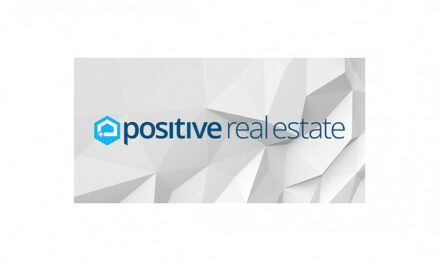For you to succeed as a real estate investor, a property portfolio is very important. It is like a resume that shows the accomplishment of a real estate investor or developer, and even more.
The property portfolio is a well-planned catalog (or record) showing the current and past real estate deals you did, including rental properties you own, property renovations or rehabs you completed, or real estate investment trusts (REITs) you created for the aim of earning wealth for the long-term. These collections represent a property investor’s achievements.
Your real estate portfolio should also include an accurate, up to date, financial figures related to your real estate developments and investments such as your repair and improvement costs and monthly operating costs. It will also provide lenders with a summary of the costs of each project, and how you leverage the money you borrowed to earn a profit.
Real estate portfolio should show your objectives and strategies, the development projects you are still workings on and the ones that are completed, your success/loss rate, and how you source for your finance.
That’s all the summary of what a property portfolio can be. But we need to dig further to understand it better, property investors and developers.
What is a portfolio in real estate or Property Portfolio?
A portfolio in real estate is a collection of real estate investments owned and managed by an individual, a group or a company to achieve a financial goal.
It should be at least two or more properties. They can be residential properties such as homes to lease or places for short-term rentals, or commercial real estate.
A real estate portfolio will serve as both a resume and a marketing arsenal for sourcing and getting more funds for future deals. It is a tool for building credibility. It is just like a track record, a collection of all your previous successes and failures.
In other words, a portfolio is one way to prove your credibility and to gain the trust of a seller or potential buyer to close a deal.
A real estate investment portfolio can make it easier for you to obtain funding from money lenders because your portfolio will not only show them your past accomplishments, experiences but will also help them to assess your level of expertise and if they are comfortable with it, they can lend you the money.
Why is property portfolio important?
The benefits of maintaining a real estate portfolio instead of a single property are:
- A property portfolio provides a steady income in the form of passive income. It makes it easier to achieve financial freedom especially if it is diversified than owning only a single property which may bring in some income (in the long run) but may not be enough even to cover your monthly expenses, or provide financial freedom or any considerable wealth.
- Multiple investments yield multiple rental incomes which are multiple sources of finance. If you own just one property, without any tenant (due to an unforeseen reason), then you would not get any rental income. But, if you have more properties and most of them rented out, you would still earn and survive.
- Instead of one property or all your properties in one area, with a balanced property portfolio you can diversify your properties and the more properties you have, the higher the chance to access equity as you pay off your loans and the value of your properties appreciates.
Even in a case where one of the properties in a particular area doesn’t grow, another one in a different area might grow in value so that you may probably be able to access equity to buy more property and increase your property portfolio faster or sell it off and earn more money.
- Multiple rent increases result in increased profitability. Rents tend to increase over time; and this means when you have multiple properties, an increase in rent will mean multiple increases in profitability while your mortgage tends to be almost the same aside from the fluctuation in interest rates.
You can use the profit to pay full or part of mortgages within a few years, and that means serious advantages in the long run.
Tip: Here the guide to safer start in real estate developments.
Is real estate investing a good idea?
Investing in real estate is not just a good but a great idea. It can make you wealthy if you are patient enough because it is not a business with a quick return.
You have an opportunity for steady and greater returns with real estate than with other investments. There’s also demand all-year-round wherever you go.
Investing in residential properties can generate income for you over time, especially if you invest in properties with inherent value or which you believe will appreciate in future as long as you understand all about the associated holding fees and you are ready to deal with any unplanned expenses.
With the increasing population, people will always need a place to live, and it is better to buy a property than to rent since the value of properties inflates with time, your rental income/cash flow and property value increase when there is inflation.
Real estate is always a significant investment because you have more options than other types of investments. Investing in residential properties can generate income for you all year-round. Even when the real estate market goes up and down, it hardly depreciates over time instead it appreciates.
Real estate is not easily affected by short-term fluctuations like the stock market, where many factors are beyond your control where you have only the option of holding or selling where your investment could disappear overnight.
But in real estate, you have unlimited options. You can buy a house and flip it, or if the market is not yet favorable, you can rent it out while waiting for it to appreciate in value to sell it. Real estate can be refinanced, rehabilitated, and rezoned. You can create small parcels from big land, develop it or subdivide, build on new blocks and lease them.
Real estate doesn’t tie up a lot of cash, and you can leverage on it because it is a bankable asset. You can put down as little as 10% and use lenders’ money to grow your investment with a low-interest rate, and it also has incredible tax benefits.
You can benefit from tax exemptions such as self-employment tax, and also, you can also benefit from tax breaks as an individual and as a married couple by claiming for property depreciation, maintenance repairs, insurance costs, property management related travel expenses, property taxes and legal fees. You are also qualified for lower tax rates for long term investments. You can also build your wealth through an excellent return of investment opportunities with tax advantages.
When you are successful property investor or developer that also means you are your own boss.
Just like any other business, you have the complete ownership and control over your properties investment strategies, your failures and successes. You will be the one to manage and maintain your properties. You are the sole decision-maker.
You can also lose money in real estate if you buy it at the height of the market and sell it at the wrong time or if you take too much equity out of your property, and do not leave profit margin when you sell it.
It takes time for real estate to appreciate, but if you hold on to your investment, you will stand a chance to gain more profit.
Tip: Affiliate marketing business can be a lucrative income stream as well. However, if it’s new are area beyond your current expertise, it all should start with investing in the best affiliate marketing training course.
Characteristics of a strong property portfolio?
A strong portfolio is one that meets one’s personal goals, financial situation and the level of risk one can take to achieve the goals. There are different strategies
for building a property portfolio, and the investor’s financial situation will determine the plan to be used to achieve the goals.
For instance, depending on the financial situation, one may decide to acquire old properties, renovate, sell or rent them out to generate income, or instead to buy new properties and rent them out.
Despite the investment strategy used, investors should ensure that their portfolio is a ‘healthy’ or well balanced because this can help maximize profit and minimize risk.
Some characteristics of a strong property portfolio are below.
- Since the aim of most real estate investors is to build a portfolio that is positively-geared (at least in the long-term), the properties should be able to generate more income than what was invested in acquiring and maintaining it, I.e. the properties should be able to pay for itself every month (ideally) and also increase in value even over the years (definitely).
- A strong property portfolio is one with properties that can give the investor a high rental return. You can go for properties in areas that attract large numbers of people to live on a short-term basis. They can offer rental yields up to 7%.
Properties that have high capital returns are mostly found in aspirational suburbs with long-term investments, with a family appeal or a strong owner-occupier appeal. It sometimes a property should not ‘appeal’ to the investor only because the investor is not the one occupying the property but the regular renters of that area. High growth properties in aspirational suburbs can easily yield 4-7% capital growth per year.
- A diversified property portfolio will help you to succeed in the real estate market by investing not only in residential properties but also in land, industrial and commercial properties located at different regional or geographical areas to minimize exposure to location-specific setbacks.
How do I grow my real estate portfolio? 7 steps guide to building a real estate portfolio
For the beginner who is interested in getting into real estate investment, the following highlights the 7 steps to building a real estate portfolio from scratch!
Step 1 – Acquire knowledge about investing in real estate; this will help you to:
I. Understand every aspect of the industry.
II. Know how to buy the best real estate that will yield profits.
III. Know factors that can affect the price of real estate investments.
IV. Understand what capitalization rate is, how to calculate rental property cash on cash return
V. Know how to ‘hunt’ and analyze real estate investment opportunities
VI. Learn how to keep growing your real estate portfolio.
Tip: You could consider property courses such are ones from Dymphna Boholt, Mark Rolton, Bob Anderson…. Etc. Remember, all come with strengths and limitations.
Step 2 – In order to succeed in this business, you need to design a plan for your Real Estate Business to guide you and keep you on track.
This plan should include:
I. Your investment goals and objectives for building your real estate portfolio. Your goals should be specific, measurable, achievable, realistic, and timely (SMART goals). This will guide you when making a decision and help you to keep track of your achievements.
II. The source of finance for purchasing the properties, your overall financial goals and the financial plan which will help you achieve the goals.
III. Since there are many ways to make money in real estate marketing; you need to have an Investment Strategy
that you believe will help you to achieve your financial goals. Then focus and stick to that strategy.
Step 3 – Before going ahead to buy your first real estate investment, here are some things you need to consider helping you choose wisely.
I. Conduct a real estate analysis, so that you can be sure that the property you’re buying is at the right location and right price. You can start small till you expand the business.
II. Have a budget that will cover all the costs that come with owning a real estate investment.
III. In making your decision, don’t be sentimental, go for positive cash flow properties as well as capital-gain properties.
Step 4 – Use real estate analytics investment tools to enable you to calculate rental income, cash flow, cash on cash return, capitalization rate.
This will help you to know if you made a good or bad investment or you can use the rental property calculator, which uses the data like the purchase price, down to do the calculations for you.
It also helps you analyze how profitable the real estate investment is and to find comparable real estate easily.
Step 5 – Purchase more investment properties.
To do this, you need cash.
Here are a few methods you can use to generate cash from your first property to purchase more properties.
I. Use the snowball method. This entails you using the cash flow generated by your property to buy more properties to increase your wealth.
II. You can also use the 1031 exchange strategy. Instead of paying some hefty capital gain taxes on the sale of your properties, which will take a large chunk of your profits that you would have used to buy another property, you can reinvest all the proceeds in a new property or properties of equal or higher value. By doing a 1031 exchange you will avoid paying more tax.
III. Use the Buy, Rehab, Rent, Refinance, and Repeat. (BRRRR) Strategy.
This implies that you purchase your real estate investment below market value, renovate and rehabilitate it, rent out to generate income that enables you to pay off the mortgage, earn more profits, and in time, build up equity.
Then, you can get your original capital by refinancing the property and repeat the process by buying a second property. And, continued…
Step 6 – Once you start accumulating more properties, you need to build a team of real estate professionals to enable you to manage your real estate portfolio to maximize profit.
Step 7 – Since real estate market fluctuates, it is advisable to diversify your Real Estate Portfolio so that if the market drops, you can use your high-performing estate investments to cover the losses.
Some ways to diversify your estate portfolio are
I. Buy properties from different locations
II. Invest in different asset classes. For instance, instead of investing in multifamily apartments only, you can also invest in single-family homes and commercial rentals.
III. Invest in Real Estate Investment Trusts, which can help you to get access to the types of real estate that you may not have access to individuals. And, it is an excellent way to invest in passive income with the least risks and responsibilities.
Tip: You could outsource some tasks through freelancer.com and fiverr.com.
Conclusion
Real estate investment portfolio is essential for your wealth creation journey, not only as a credibility tool to easily gain the trust and close a deal with a buyer or seller, or to easily get a loan from money lenders but it can help you to gain financial freedom, serve as your multiple sources and live comfortably after retirement without financial worries.
Although property investment is not a get-rich-quick scheme, it requires patience and focuses on your set goals and objectives.
Again, most times properties appreciate with time, especially if you can get them at a reasonable price and a good location.
So, it pays if you can acquire the knowledge about investing on properties, the type and location of properties you can buy that will generate more income than you invested in it or give you more rental return and start building your portfolio if you are really interested in real estate investment.
Tip: Blogging is a income generative lifestyle giving you the wings to earn money from home. The success retain in finding a profitable affiliate marketing niche and sticking with best affiliate marketing programs.
Tip: Regardless of the venture you are interested in, it’s handy to use language softwares such as WhiteSmoke, Ginger, ProWritingAid or Grammarly.






0 Comments